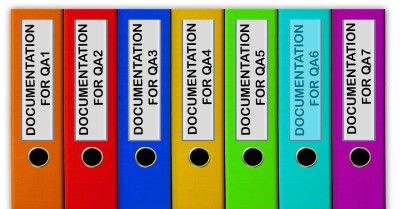Quality Area 6 – Collaborative Partnerships With Families and Communities enables services to build respectful relationships. This provides children with the opportunity to develop a positive sense of self and experience respectful relationships. . Collaborative partnerships are achieved when the service’s philosophy has a strong commitment to valuing diversity, inclusive practice and connecting to the community.
The following lists the documentation services are required to have in order to support achievement of QA5 in each element.
6.1 – Respectful relationships with families are developed and maintained and families are supported in their parenting role.
6.1.1 - Families are supported from enrolment to be involved in the service and contribute to service decisions.
Documentation to support this includes:
- the service’s enrolment and orientation procedures and documentation
- evidence that families seeking a place at the service are provided with easy to read information about how the service operates and what it can provide (including information about inclusion and learning)
- assist families to access service policies and procedures
6.1.2 – The expertise, culture, values and beliefs of families are respected and families share in decision making about their child’s learning and wellbeing.
Documentation to support this include:
- information from the family about each child’s background, experiences, preferences and home routines is updated, recorded in the child’s documentation and used to support curriculum decision-making
- families are given opportunities to provide feedback about their child’s experiences, make suggestions about service routines, transitions and activities, contribute to curriculum decision-making and the documentation of children’s learning
- families’ knowledge of their children is incorporated into plans for children’s experiences and learning
6.1.3 - Current information is available to families about the service and relevant community services and resources to support parenting and family wellbeing.
Documentation to support this includes:
- newsletters, communication books or other methods of communication with Families
- information about the service’s philosophy, operation, policies and procedures being available in areas of the service regularly accessed by families, in service documentation provided to them on noticeboards, charts or posters in areas regularly used by families and/or through appropriate media
- information about community services and resources available in areas of the service regularly used by families but where they can be accessed privately
- service documentation such as the family handbook
- easy-to-read information about the service in the languages used at the service and in the local community
- evidence that policy changes are explained in detail and communicated to families prior to implementation
6.2 - Collaborative partnerships enhance children’s inclusion, learning and wellbeing.
6.2.1 - Continuity of learning and transitions for each child are supported by sharing information and clarifying responsibilities.
Documentation to support this includes:
- examples of summaries of the child’s progress towards the learning outcomes when transitioning between different age settings
- examples of plans and statements to assist children in making positive transitions from the service to formal schooling
- written procedures for releasing children from the service and ensuring that they are released only to authorised nominees
- records of children’s arrivals and departures, with the signature of the person responsible for verifying the accuracy of the record and the identity of the person collecting the child
- evidence that in centre-based services, shifts are planned to maximize continuity of education and care for children
6.2.2 - Effective partnerships support children's access, inclusion and participation in the program.
Documents to support this includes:
- the service seeks to build their capacity to respond to each child’s specific requirements
- professional development that supports responsiveness to each child’s specific requirements and inclusive practices
- service’s philosophy, policies and procedures demonstrate a commitment to access, inclusion and participation for every child and their family in the service
- meetings and/or communication between the service, families, and other agencies or specialists working with individual children
- where required, families are referred and supported to make contact with appropriate support services/agencies
- with the family’s consent and when required, information about the child’s experiences and achievements in the service is appropriately shared with other support services/agencies
- examples of individual support plans for children that are implemented within the daily program and/or Strategic Inclusion Plans that promote inclusive programs and practices
- procedures for families or educators to request referrals for children
- processes for making and accepting referrals from other services/agencies in the local community such as child protection agencies, early childhood intervention services, cultural support agencies, family support agencies, health professionals
- images, books and resources that reflect children and adults, from a range of backgrounds, cultures and abilities, as active contributors to and participants in the community
6.2.3 - The service builds relationships and engages with its community.
Documents to support this includes:
- the service liaises with other children’s services, local businesses, schools, health and family support services and other organisations working with families and children in the local area
- members of the local community are invited into the service to contribute to the program
- children have opportunities to learn about and contribute to the community in which the service is located
- planned experiences that involve incursions and/or children visiting parts of their community to extend knowledge gained
For a list of outcomes under each element: How To Achieve Quality Area 6
